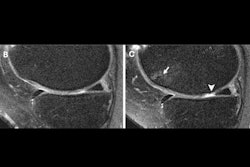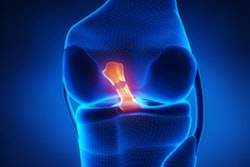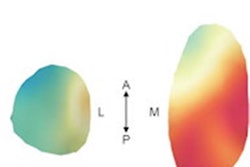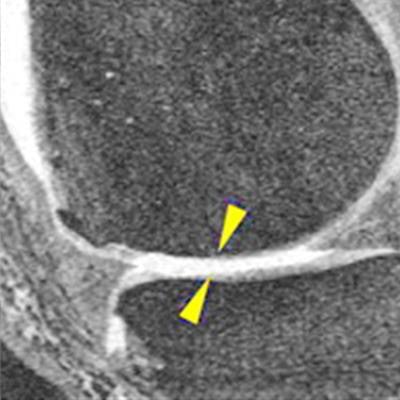
Sports like tennis and racquetball speed the breakdown of the knee joint in overweight people with osteoarthritis, according to research to be presented at the upcoming virtual RSNA 2020 conference. Such individuals might want to switch sports to avoid knee injury, the authors suggest.
The more rapid degeneration of the knee joints in people who play racket sports is probably due to the high-speed lateral movements such sports require -- and it is exacerbated in overweight people, a team led by Dr. Silvia Schirò of the University of California, San Francisco said in a statement released by the RSNA.
"A large lateral force imparted at the foot during side-to-side movements may be driving large knee adduction moments, a key feature in medial compartment disease, which imparts high compressive loads on the medial tibia and femoral condyle," the researchers said. "In support of this premise, the racket sports group showed elevated cartilage degeneration in the medial tibia."
Knee joint osteoarthritis affects 14 million people in the U.S., according to the RSNA, and being overweight is a risk factor. One way to combat weight gain is through exercise, but it must be the right kind for at-risk populations, the group noted: Inappropriate types of exercise such as racket sports have the potential to damage knees joints and accelerate the need for knee replacement surgery.
Schirò and colleagues used MRI to evaluate the rate of degeneration of the knee joint in 415 overweight or obese patients also enrolled in the U.S. National Institutes of Health's Osteoarthritis Initiative, which studies those with mild to moderate osteoarthritis.
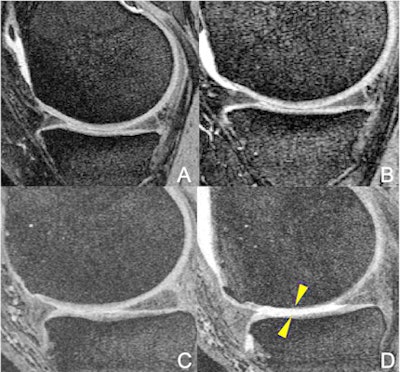 MR images of the right knee (A, B, C, D) at baseline (A, C) and after 48 months (B, D). An overweight 47-year-old woman in the elliptical trainer group (A-B) and an overweight 64-year-old man in the racket sports group (C-D). The man in the racket sports group developed severe cartilage damage at the femur and tibia bones (arrowheads). In contrast, no cartilage damage was seen in the woman in the elliptical trainer group (A-B). Images and caption courtesy of the Radiological Society of North America.
MR images of the right knee (A, B, C, D) at baseline (A, C) and after 48 months (B, D). An overweight 47-year-old woman in the elliptical trainer group (A-B) and an overweight 64-year-old man in the racket sports group (C-D). The man in the racket sports group developed severe cartilage damage at the femur and tibia bones (arrowheads). In contrast, no cartilage damage was seen in the woman in the elliptical trainer group (A-B). Images and caption courtesy of the Radiological Society of North America.The patients kept records of participation in six types of physical activity: ball sports, bicycling, jogging/running, elliptical trainer, racket sports, and swimming. Each person underwent a baseline MRI scan and a follow-up exam four years later. The investigators assessed any changes in the patients' knees using the Whole-Organ Magnetic Resonance Imaging Score.
Racket sports increased knee joint denigration much more than, for example, using an elliptical trainer; overall score also increased significantly more in the racket sports group compared with the jogging/running group. Those study participants who also played racket sports had significantly greater degeneration in the medial tibial cartilage compartment, where arthritis typically begins to appear.
Reducing knee osteoarthritis risk in this population may be relatively easy, according to the team: Switch sports.
"Overweight and obese subjects could benefit from low impact physical activities, especially exercising with an elliptical trainer in order to slow progression of knee joint degeneration and cartilage defects," Schirò and colleagues concluded.






